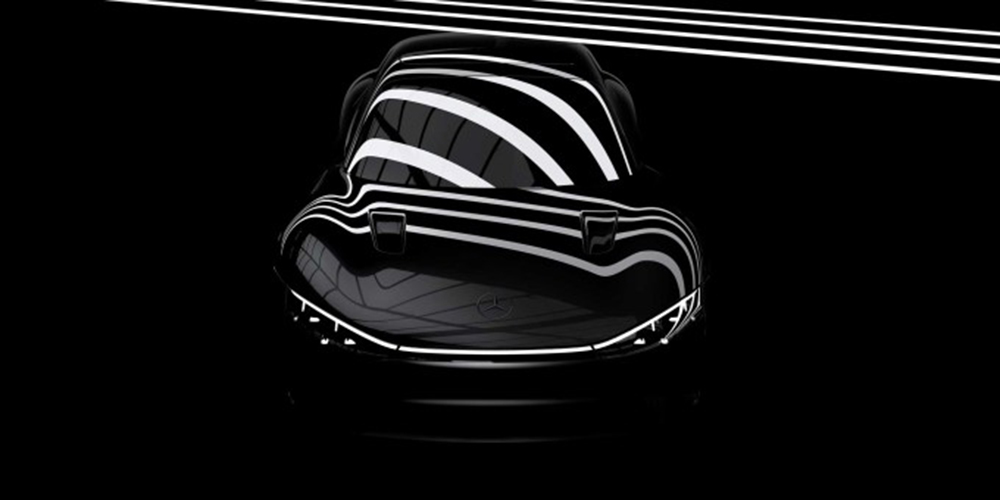面對來自特斯拉和監(jiān)管機構(gòu)的雙重壓力,,梅賽德斯-奔馳(Mercedes-Benz)將頗具野心的目標提升了一倍——預計到2025年,,其銷售的汽車中約有50%將部分或完全由電池供電。
戴姆勒公司(Daimler)的這個核心汽車部門在前十年間總共為其純電動汽車(BEVs)計劃撥款逾400億歐元。7月22日,,梅賽德斯又公布了到2030年完全轉(zhuǎn)向生產(chǎn)清潔,、零排放汽車的計劃(如果條件允許)。
一周之前,,歐盟委員會(European Commission)宣布了到2035年禁止傳統(tǒng)內(nèi)燃機汽車(ICE)的計劃,,成為應對氣候變化政策藍圖的一部分。
戴姆勒的首席執(zhí)行官康林松(Ola K?llenius)在一次演講中稱:“轉(zhuǎn)折點正在臨近,,尤其是在奔馳所屬的豪華車領(lǐng)域,。這也是我們加大賭注的原因,讓奔馳盡快從‘電動汽車優(yōu)先’加速到‘純電動汽車’,?!?/p>
到2025年,該公司將為其系列中的每一款車型都提供可替代的純電動汽車——盡管純電動汽車的制造成本將大幅提高,,預計到2030年才會與內(nèi)燃機汽車趨同,。
為了維持轉(zhuǎn)型期間的盈利能力,該公司計劃“徹底削減”與純電動汽車無關(guān)的所有產(chǎn)品投資,,比如,,公司將不再為內(nèi)燃機汽車車型開發(fā)新的車輛平臺。這意味著,,將電池與汽油/柴油發(fā)動機結(jié)合在一起的新型插電式混合動力車,,也將在未來10年內(nèi)告別市場。

在這個計劃當中,,還包括公司將與合作伙伴一起在全球建立8家工廠,,其中包括一家在美國的工廠,每年生產(chǎn)價值200千兆瓦時的電池,,可供大約200萬輛純電動汽車使用,。
但是,,對管理層來說,,中期目標似乎比預想的更接近、更直接,,因為從頭開始開發(fā)一種全新的模式通常需要三年甚至更長時間,。漫長的準備時間意味著,戰(zhàn)略上的根本性轉(zhuǎn)變首先需要在系統(tǒng)中發(fā)揮作用,,然后才會產(chǎn)生影響,。
來自一級方程式賽車的幫助
在這個進程當中,梅賽德斯還計劃在法律允許的地方逐步取消通過特許經(jīng)銷商的分銷,,其將在各個市場逐步轉(zhuǎn)向直銷模式,。因此,創(chuàng)業(yè)風險將從汽車零售商轉(zhuǎn)移到汽車公司。
梅賽德斯過去曾經(jīng)在德國使用過這一方法,,但只是在關(guān)鍵銷售區(qū)域的經(jīng)銷商破產(chǎn)時作為權(quán)宜之計,。特斯拉公司已經(jīng)證明了(通過直銷模式)擁有客戶數(shù)據(jù)的價值有多少,以及在汽車的整個生命周期內(nèi)向客戶出售服務的能力,,為原本利潤率較低的業(yè)務開辟了新的盈利潛力,。
為了展示品牌可以達成的成就,梅賽德斯將在明年推出一款名為Vision EQXX的概念車,,一次充電能夠行駛1000公里(約621英里)以上,,汽車的設計部分得到了一級方程式賽車車隊頂尖人士的幫助。
梅賽德斯的首席運營官馬庫斯?舍費爾說:“我們的目標是盡量在所有領(lǐng)域大幅提高效率,、減少消費,。”他還補充稱,,這些進步將有利于未來的系列量產(chǎn)車,。
達到這一目標需要比奔馳EQS更好的空氣動力學性能——奔馳EQS號稱擁具有有史以來生產(chǎn)的所有量產(chǎn)車型中最低的阻力系數(shù)。并且,,電池級的能量密度也需要提高20%,。
“我們的專家正在努力推高電機、逆變器,、電池設計,、封裝和熱管理的極限?!鄙豳M爾說,,“他們追求邊際收益,將其復合成極限范圍的大幅提升,?!保ㄘ敻恢形木W(wǎng))
面對來自特斯拉和監(jiān)管機構(gòu)的雙重壓力,梅賽德斯-奔馳(Mercedes-Benz)將頗具野心的目標提升了一倍——預計到2025年,,其銷售的汽車中約有50%將部分或完全由電池供電,。
戴姆勒公司(Daimler)的這個核心汽車部門在前十年間總共為其純電動汽車(BEVs)計劃撥款逾400億歐元。7月22日,,梅賽德斯又公布了到2030年完全轉(zhuǎn)向生產(chǎn)清潔,、零排放汽車的計劃(如果條件允許)。
一周之前,,歐盟委員會(European Commission)宣布了到2035年禁止傳統(tǒng)內(nèi)燃機汽車(ICE)的計劃,,成為應對氣候變化政策藍圖的一部分。
戴姆勒的首席執(zhí)行官康林松(Ola K?llenius)在一次演講中稱:“轉(zhuǎn)折點正在臨近,,尤其是在奔馳所屬的豪華車領(lǐng)域,。這也是我們加大賭注的原因,讓奔馳盡快從‘電動汽車優(yōu)先’加速到‘純電動汽車’?!?/p>
到2025年,,該公司將為其系列中的每一款車型都提供可替代的純電動汽車——盡管純電動汽車的制造成本將大幅提高,預計到2030年才會與內(nèi)燃機汽車趨同,。
為了維持轉(zhuǎn)型期間的盈利能力,,該公司計劃“徹底削減”與純電動汽車無關(guān)的所有產(chǎn)品投資,比如,,公司將不再為內(nèi)燃機汽車車型開發(fā)新的車輛平臺,。這意味著,將電池與汽油/柴油發(fā)動機結(jié)合在一起的新型插電式混合動力車,,也將在未來10年內(nèi)告別市場,。
在這個計劃當中,還包括公司將與合作伙伴一起在全球建立8家工廠,,其中包括一家在美國的工廠,每年生產(chǎn)價值200千兆瓦時的電池,,可供大約200萬輛純電動汽車使用,。
但是,對管理層來說,,中期目標似乎比預想的更接近,、更直接,因為從頭開始開發(fā)一種全新的模式通常需要三年甚至更長時間,。漫長的準備時間意味著,,戰(zhàn)略上的根本性轉(zhuǎn)變首先需要在系統(tǒng)中發(fā)揮作用,然后才會產(chǎn)生影響,。
來自一級方程式賽車的幫助
在這個進程當中,,梅賽德斯還計劃在法律允許的地方逐步取消通過特許經(jīng)銷商的分銷,,其將在各個市場逐步轉(zhuǎn)向直銷模式。因此,,創(chuàng)業(yè)風險將從汽車零售商轉(zhuǎn)移到汽車公司,。
梅賽德斯過去曾經(jīng)在德國使用過這一方法,但只是在關(guān)鍵銷售區(qū)域的經(jīng)銷商破產(chǎn)時作為權(quán)宜之計,。特斯拉公司已經(jīng)證明了(通過直銷模式)擁有客戶數(shù)據(jù)的價值有多少,,以及在汽車的整個生命周期內(nèi)向客戶出售服務的能力,為原本利潤率較低的業(yè)務開辟了新的盈利潛力。
為了展示品牌可以達成的成就,,梅賽德斯將在明年推出一款名為Vision EQXX的概念車,,一次充電能夠行駛1000公里(約621英里)以上,汽車的設計部分得到了一級方程式賽車車隊頂尖人士的幫助,。
梅賽德斯的首席運營官馬庫斯?舍費爾說:“我們的目標是盡量在所有領(lǐng)域大幅提高效率、減少消費,?!彼€補充稱,這些進步將有利于未來的系列量產(chǎn)車,。
達到這一目標需要比奔馳EQS更好的空氣動力學性能——奔馳EQS號稱擁具有有史以來生產(chǎn)的所有量產(chǎn)車型中最低的阻力系數(shù)。并且,,電池級的能量密度也需要提高20%,。
“我們的專家正在努力推高電機、逆變器,、電池設計,、封裝和熱管理的極限?!鄙豳M爾說,“他們追求邊際收益,,將其復合成極限范圍的大幅提升,。”(財富中文網(wǎng))
Feeling the heat from Tesla on the one side and from regulators on the other, Mercedes-Benz doubled its ambitions and now expects that by 2025 about 50% of the cars it sells will be partly or solely powered by a battery.
Daimler’s core auto division earmarked over €40 billion euros in spending for its battery electric vehicles (BEVs) program through the end of the decade, unveiling plans on July 22 to shift entirely to clean, zero emission vehicles by 2030, if possible.
The announcement comes only a week after the European Commission announced plans to ban conventional internal combustion engine (ICE) cars by 2035 as part of a wider roadmap to tackle climate change.
“The tipping point is getting closer, especially in the luxury segment where Mercedes belongs,” said Daimler CEO Ola K?llenius during a presentation. “And that’s why we’re upping the ante, accelerating from EV-first to EV-only.”
By 2025, the company will offer a BEV alternative for every model in its range, despite substantially higher manufacturing costs, which aren't expected to converge with those of ICE cars until 2030.
To protect its profitability in the transition, the company plans a “radical reduction” in all product investments not related to BEVs. No new vehicle platforms will be developed for ICE cars. That means new plug-in hybrids that marry a battery with a gasoline or diesel engine will also eventually run out in the course of the decade.
As part of those plans it will install, together with partners, eight factories across the globe, including one in the U.S., producing a combined annual output of 200 gigawatt hours worth of battery cells, roughly equivalent to 2 million BEVs.
For management, the mid-term target is nearer than it appears as it typically takes three years and sometimes more to develop a new model from scratch. These long lead times mean fundamental shifts in strategy first need to work their way through the system before the effects can be felt.
Help from Formula 1
As part of the process, Mercedes also plans to phase out distribution via franchise dealerships wherever legally permitted. Bit by bit, market by market, it will shift to a direct sales model where the entrepreneurial risk shifts from the car retailer to the car company.
Mercedes has employed this in the past in Germany, but only as a stopgap solution when a dealer went bankrupt in a key sales territory. Tesla has shown that the value of owning a customer’s data and the ability to sell them services over the lifetime of a vehicle opens up new earnings potential in what was otherwise a low-margin business.
To demonstrate what the brand can achieve, Mercedes will present over the course of next year a concept car called the Vision EQXX capable of driving over 1,000 kilometers (621 miles) on one charge, engineered in part with the help of the top minds from its Formula 1 team.
“The goal is to massively reduce consumption with extraordinary efficiency improvements in almost all areas,” said Mercedes operations chief Markus Sch?fer, adding these developments would later benefit series production cars in the future.
Achieving that means better aerodynamics than the Mercedes EQS, which it claims has the lowest drag coefficient of any production car ever built, as well as a 20% improvement in energy density at the cell level.
“Our experts are pushing the boundaries of what’s possible in terms of electric motor, inverter, battery design, packaging and thermal management,” he said. "They are chasing marginal gains that compound to a substantial increase in range."






